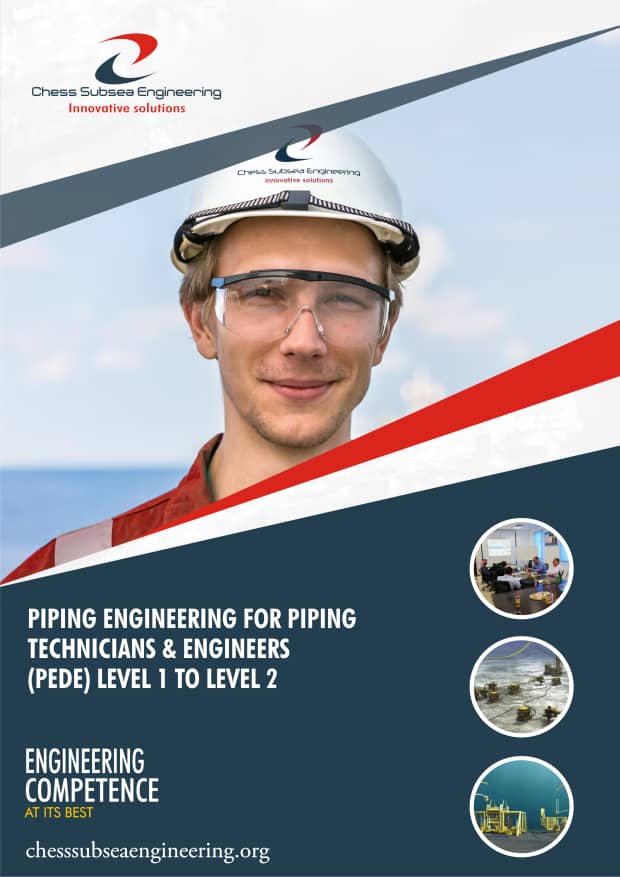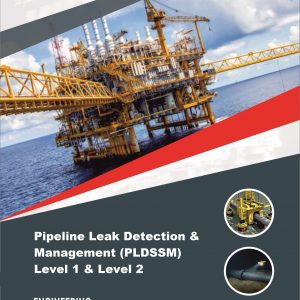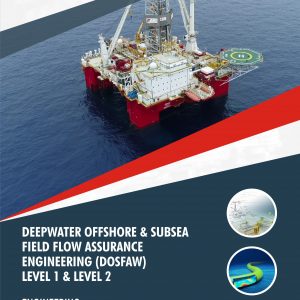Description
The PEDE Level 1 course is designed to provide engineers with a comprehensive understanding of piping engineering and design principles. It covers topics such as piping system components, materials selection, pipe sizing, and layout considerations, providing participants with a solid foundation in the fundamentals of piping design.
The PEDE Level 2 course builds upon the knowledge gained in Level 1 and focuses on advanced piping engineering and design techniques. It delves deeper into topics such as stress analysis, pipe supports, and pipe routing optimization, enabling participants to develop advanced skills in designing efficient and safe piping systems.
Both the Level 1 and Level 2 courses emphasize practical applications and hands-on learning. Participants will have the opportunity to work on real-world case studies and design exercises, allowing them to apply the learned principles to solve piping design challenges commonly encountered in engineering projects.
The courses also cover relevant industry standards and codes related to piping design. Participants will become familiar with international piping codes and regulations, ensuring compliance and safety in the design process.
Upon completion of the PEDE Level 1 and Level 2 courses, participants will possess the necessary knowledge and skills to design and engineer piping systems for a variety of industries, including oil and gas, petrochemical, and power generation. They will be capable of performing pipe stress analysis, selecting appropriate materials, and designing piping layouts that meet project requirements and industry best practices.
Course Outlines
History of Subsea Engineering
Shallow & Deepwater Subsea Completions
Subsea Production Systems (SPSs):Major Components
Subsea Production Systems (SPSs) Segments
Characterization of Subsea Production Systems (SPSs)
Subsea Field Development Case Study
What is a Piping System
Understanding Piping Fundamentals
Piping System Layout Development
ASME Codes and Other Standards for Piping Engineering and Design.
Pipe Fittings, Pipe Components and Specialty Items
Interfacing with other Disciplines During Engineering Design
Legend and Symbols
Process Flow Diagram (PFD)
Modification Drawings, Demolition Drawings
Preparation of Tie-in-List
Site Survey / Tie-in Sketches
Plot Plan in piping Engineering
Isometrics in Piping Engineering
Equipment Layout and Piping Engineering General Arrangement Drawing
Piping Spools and Piping Support
Piping Engineering Hydraulics
Designing Piping System per Codes and Standards
Pipe Stress and Introduction to Stress Analysis in Piping Engineering
Piping Material Take-off
Dummy Piping Engineering and Design Project
Functions of Piping Engineering & Piping Engineering Team
Technical Support References
Ref 1: Piping concept layout development
Ref 2: Piping components & their access requirement
Ref 3: Piping straight length requirements
Ref 4: Piping orientation of various tapings & components
Ref 5: Piping drains & vents
Ref 6: Piping Insulation
Ref 7: Piping Material & Sizing
Ref 8: Critical piping system consideration
Ref 9: Pipe Stress Analysis
Ref 10: Pipe Supports
Ref 11: Testing of Piping Systems
Ref 12: Piping Valves Classification
Ref 13: Piping Valves Categorization
Ref 14: Piping Valves Categorization Based on Motion
Ref 15: Methods of Controlling Flow through a Valve
Ref 16: Basic Parts of the Valve
Ref 17: Valve End Connections
Assessment
Participant underpinning knowledge of piping engineering & design will be accessed with short answer multiple-choice questionnaire and case studies at the conclusion of the course.
Professional Certificate
Issued directly by Chess Subsea Engineering Europe.
Participant may be presented for Offshore Petroleum Training Organization (OPITO) Certification.
How to Register
Click here to download registeration booklet on msword and email completed booklet to info@chesssubseaengineering.org directly.










